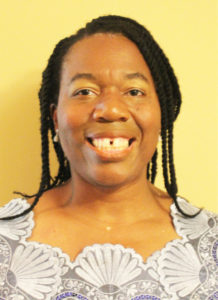FOCUS ON HEALTH
I Injured my back…Do I need surgery?

By Virginia Nystem
One of my patients recently visited my office after suffering a slip and fall accident on her driveway. She slipped on ice, fell on her back and immediately experienced low back pain, right leg pain and numbness. She visited the emergency department of a local hospital and had a CT scan of her low back. The emergency doctor told her that the CT scan showed a herniated disc in the lumbar spine, and this was causing her pain and symptoms. She was provided with some pain medication and advised to follow-up with her family physician for ongoing care.
When she visited my office, she was in pain and quite worried about her situation. Her first question: “Do I need surgery?” The thought of having back surgery terrified her. I explained to her that I would first get a thorough history of her accident and symptoms, perform an examination, and then explain to her my findings and recommendations for treatment.
Her main symptoms were:
- Sharp and stabbing pain in the low back
- Back pain radiating into the buttock and down the right leg
- Difficulty sitting for long periods of time
- Pain with straining
My examination revealed:
- Painful posture and slow and painful walking
- Pain in the low back and buttock muscles
- Weakness with the right leg (difficulty standing on the heel of the right foot)
- Numbness in the right lower leg and parts of the foot
- Pain with coughing and sneezing
The lumbar spine is made up of 5 spinal bones, called vertebra. The bones are separated by spongy shock absorbers called discs. The spinal bones are connected to one another by ligaments, tendons, and muscles. When she fell backwards, the spongy disc material ruptured and shifted to the point that it was able to put pressure on the nerves at that level. There was also likely some injury to the muscles and joints in the lumbar spine. The muscle, joint and disc injuries were the cause of her pain and symptoms.
I explained to her that disc injuries are common and most are treated successfully with rehabilitation. Her treatments would include:
- Chiropractic and manual therapies to restore proper movement to the joints Therapeutic Laser therapy to reduce inflammation and pain, and promote healing of the collagen.
- Stretching and strengthening exercises. – There are specialized back exercise programs such as Core strengthening (abdominal exercises) and the McKenzie exercise program (for disc injuries) that can help relieve back pain.
- Education on proper posture techniques at work, at rest, with lifting, sleeping, and rising from the bed or chair are important parts of the rehabilitation program, and can help reduce further injury to the low back.
- Massage therapy and Acupuncture are helpful for providing a pain-relieving effect throughout the body, an anti-inflammatory effect, and a general sense of improved well-being.
- Continue using the ice packs, heat packs, and supportive back brace to ease your pain as directed.
- Continue follow-up visits with the family physician to manage the prescribed and over-the-counter pain medication.
I also explained to her that if she experienced symptoms we consider “red flags” such as difficulty controlling bowel or bladder function, then she should seek immediate emergency care at a hospital.
My patient felt relieved after the assessment and explanation of her condition. She fully understood the reason for her pain and was committed to following the treatment program. After eitght weeks of treatment, she reported a 75 per cent reduction in her pain and symptoms, and was happy to return to many of her daily activities.
Stop the Pain … Before the Pain Stops You!
Dr. Virginia Nsitem is a chiropractor specializing in laser therapy for spine, muscle, joint, and nerve injuries and is a Fellow of the Royal College of Chiropractic Sports Sciences in Canada. She may be reached at (905) 275-4993, or by email at totalhealth@bellnet.ca


